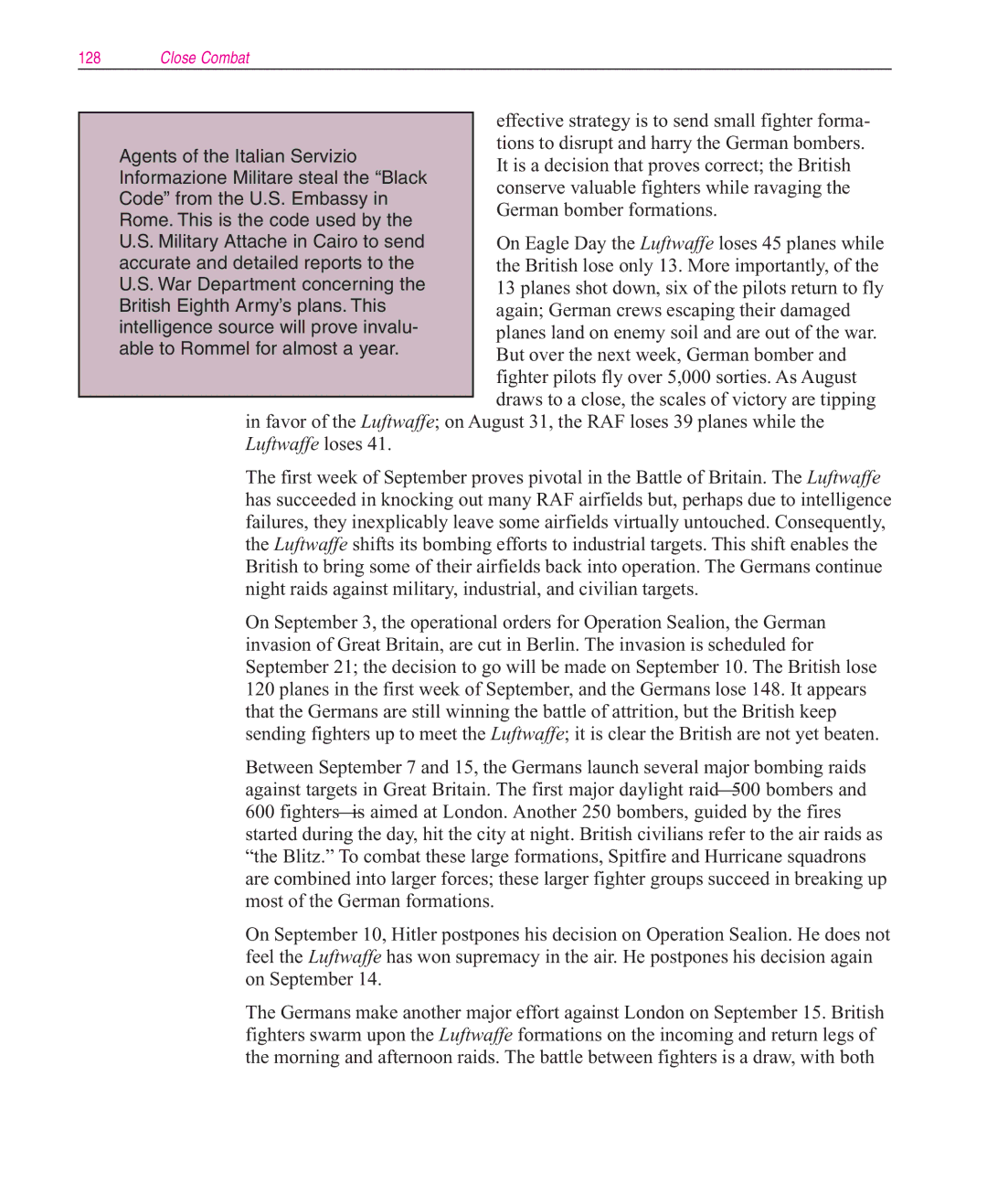
128Close Combat
effective strategy is to send small fighter forma- tions to disrupt and harry the German bombers. It is a decision that proves correct; the British conserve valuable fighters while ravaging the German bomber formations.
On Eagle Day the Luftwaffe loses 45 planes while the British lose only 13. More importantly, of the 13 planes shot down, six of the pilots return to fly again; German crews escaping their damaged planes land on enemy soil and are out of the war. But over the next week, German bomber and fighter pilots fly over 5,000 sorties. As August draws to a close, the scales of victory are tipping
in favor of the Luftwaffe; on August 31, the RAF loses 39 planes while the Luftwaffe loses 41.
The first week of September proves pivotal in the Battle of Britain. The Luftwaffe has succeeded in knocking out many RAF airfields but, perhaps due to intelligence failures, they inexplicably leave some airfields virtually untouched. Consequently, the Luftwaffe shifts its bombing efforts to industrial targets. This shift enables the British to bring some of their airfields back into operation. The Germans continue night raids against military, industrial, and civilian targets.
On September 3, the operational orders for Operation Sealion, the German invasion of Great Britain, are cut in Berlin. The invasion is scheduled for September 21; the decision to go will be made on September 10. The British lose 120 planes in the first week of September, and the Germans lose 148. It appears that the Germans are still winning the battle of attrition, but the British keep sending fighters up to meet the Luftwaffe; it is clear the British are not yet beaten.
Between September 7 and 15, the Germans launch several major bombing raids against targets in Great Britain. The first major daylight raid 500 bombers and 600 fighters is aimed at London. Another 250 bombers, guided by the fires started during the day, hit the city at night. British civilians refer to the air raids as “the Blitz.” To combat these large formations, Spitfire and Hurricane squadrons are combined into larger forces; these larger fighter groups succeed in breaking up most of the German formations.
On September 10, Hitler postpones his decision on Operation Sealion. He does not feel the Luftwaffe has won supremacy in the air. He postpones his decision again on September 14.
The Germans make another major effort against London on September 15. British fighters swarm upon the Luftwaffe formations on the incoming and return legs of the morning and afternoon raids. The battle between fighters is a draw, with both
